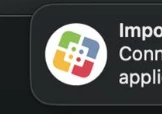So this may be a stupid question. All of the notifications that come from jamf policies (patch management for example) always show with the default jamf icon. Where do you set a custom image?

Enter your E-mail address. We'll send you an e-mail with instructions to reset your password.